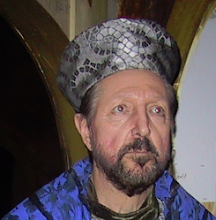Richard Plantagenet was born on 2
October 1452 at Fotheringhay
Castle in Northampton shire, the youngest
son of Richard, Duke of York, and his wife, the former Cecily Neville.
Richard’s brother, Edward, seized the
throne of England in March of 1460 and defeated the Lancastrians at Towton on
29 March 1460.
Richard, was created duke of Gloucester
at the age of eight and entered the household of his cousin, Richard Neville,
Earl of Warwick, to begin his education as a nobleman.
Richard accompanied Edward to the
continent and on their return to England in 1471 the eighteen-year-old duke was
given command of the vanguard at the Battles of Barnet and Tewkesbury. These battles
were resounding Yorkist victories and both Warwick and the Lancastrian heir,
Prince Edward of Wales, were killed. The former king, Henry VI, died a few days
later in London.
Richard now assumed the responsibilities
of his position. He had been admiral of England since 1461 and he was now
appointed constable. King Edward granted Richard many of Warwick's forfeited
estates and the following year the duke married Warwick's younger daughter
Anne, who was the widow of Prince Edward who was killed at Tewkesbury.
He remained in the North and tended to
his estates; defending the North against an invasion of the Scots. He left on occasion to help his brother in an
invasion of France and again to attend parliament.
On 9 April 1483, a
year of great importance to Richard, King Edward died, a few days short of his
forty-first birthday. There had been no time to prepare for a transition of
power and the heir, another Edward, was twelve years old.
Richard was called to
London and moved quickly and decisively to get into a position of power. He was given responsibility for the
protection of the two young princes. The
children were shortly thereafter declared illegitimate heirs to the throne and
within four days, Richard was acclaimed King of England
On Christmas Day
1483, in Rennes Cathedral, Henry Tudor declared his intention of marrying King
Edward IV's eldest daughter, the Lady Elizabeth, when he became king of
England. He then spent the next eighteen months planning his invasion.
The invasion came in August of 1485 and
on August 22, on Bosworth Field in Leicestershire, Richard was killed in
battle. He was not yet 33 years old.
A documentary on the finding of his
remains, under a parking lot at the location of the Abbey to which his body was
reportedly taken, revealed that he died of wounds received in close, hand to
hand combat on the battle field. He was
indeed a man of war. The picture above is based on the skull of the skeleton that was unearthed.
To his credit he instituted the
philosophy of being innocent until proven guilty as well as reforming the jury
system used in England at that time.
The source of this information is various websites for Richard III


No comments:
Post a Comment